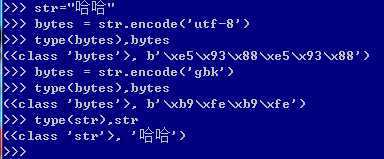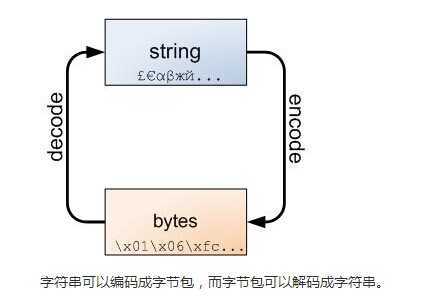标签:style blog http ar color os sp on 数据
最近把一段py2的代码转换到py3的代码,结果运行到向socket中写数据的代码部分出现了‘str‘ does not support the buffer interface这样一个错误.
一番搜索之后,发现py3里是严格区分了str和bytes的.怎么理解str和bytes呢?你可以认为str是一段文本,比如“abcd#%$^*&”什么的,而bytes呢,是二进制的一堆0,1的比特而已.看下面的图:

可以看到str的类型是class ‘str‘,而str.encode()以后类型是class ‘bytes‘,这二者是不同的.而str.encode(‘gbk’)和str.encode(‘utf-8‘)得到的bytes的表示也是不同的.也就是说在采用不同的编码时,对同样的文本“哈哈”而言,其在内存中的那一堆01是不一样的.
str和bytes之间可以通过encode(),decode()相互转化.

下面是Python34\Lib\socket.py中的一段代码,可以看到在py3中,向一个socket file中写数据必须写的是bytes或是bytearray类型的
1 def write(self, b): 2 """Write the given bytes or bytearray object *b* to the socket 3 and return the number of bytes written. This can be less than 4 len(b) if not all data could be written. If the socket is 5 non-blocking and no bytes could be written None is returned. 6 """ 7 self._checkClosed() 8 self._checkWritable() 9 try: 10 return self._sock.send(b) 11 except error as e: 12 # XXX what about EINTR? 13 if e.args[0] in _blocking_errnos: 14 return None 15 raise
所以在send(content)的时候如果content类型不是bytes或bytearray而是str的话就会出现‘str‘ does not support the buffer interface的问题.将send(content)修正为send(content.encode())就好啦.
标签:style blog http ar color os sp on 数据
原文地址:http://www.cnblogs.com/sdu20112013/p/4140748.html